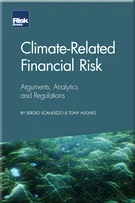The Eurozone Crisis: The Forgotten Risks of Private and External Debt
Greetje Frankena, Daan Willebrands, John Lorié and Daniel Bosgraaf
Preface: Two economists’ views on the bank-sovereign linkage
Introduction
Assessing Country Risk: A Practical Guide
Sovereign Risk: Characteristics, History and a Review of Recent Research
The Arab Spring: Insights for Political Risk Analysis
The Eurozone Crisis: The Forgotten Risks of Private and External Debt
How the Eurozone Crisis Became a Banking Crisis, and the Risk of Japanisation
The Changing Dynamics of Country Risk
Capital Flight as a Political Risk Indicator
Debt Crisis Indicators of Emerging Markets versus Eurozone Economies
How Much Economic Capital Could European Banks Save? The Case for Optimal Sovereign Risk Allocation
Fixing Fundamental Flaws in Probabilistic Country Risk Models
Have We Learned the Country Risk Management Lessons of the 1997 Asian Financial Crisis?
Using Systems Thinking to Enhance Country Risk Assessment
Approaches to the Quantification of Country Risk
Stress Testing Across International Exposures and Activities
The financial crisis that hit the US and Europe in 2007–08 caused an economic recession much more severe and protracted than any other since the Great Depression of the 1930s. In the eurozone in particular, countries are still struggling with the aftermath of the so-called great financial crisis. This chapter will address a number of key questions related to this economic crisis by analysing developments across the eurozone. Why did it occur in the first place? Why was it so severe and protracted? What has been done about it? Can future crises be prevented by the new insights obtained? What lessons can be drawn for country risk analysts?
This chapter will argue that important elements have been missing in the analysis of economic events in the run-up to the crisis, and arguably too long thereafter. In the eurozone context, these elements are, first, a fundamental lesson from long ago by Fisher (1931) and later Minsky (1986), which appears to somehow have been forgotten: the importance of private debt; and, second, that the relevance of the extent of debt financed abroad – ie, external debt – seems to have also been overlooked.
One reason for the latter lesson being forgotten
Copyright Infopro Digital Limited. All rights reserved.
As outlined in our terms and conditions, https://www.infopro-digital.com/terms-and-conditions/subscriptions/ (point 2.4), printing is limited to a single copy.
If you would like to purchase additional rights please email info@risk.net
Copyright Infopro Digital Limited. All rights reserved.
You may share this content using our article tools. As outlined in our terms and conditions, https://www.infopro-digital.com/terms-and-conditions/subscriptions/ (clause 2.4), an Authorised User may only make one copy of the materials for their own personal use. You must also comply with the restrictions in clause 2.5.
If you would like to purchase additional rights please email info@risk.net










